- Home
- slideshows
- miscellaneous
- The first must-play game of 2018 is here: 'A Way Out' is an incredible, cinematic experience that you can't miss
The first must-play game of 2018 is here: 'A Way Out' is an incredible, cinematic experience that you can't miss
"A Way Out" is the best example yet of how video games can be used for storytelling.

The game is literally divided in half between the two main characters — it's an ambitious design choice that gets more interesting as the game goes on.
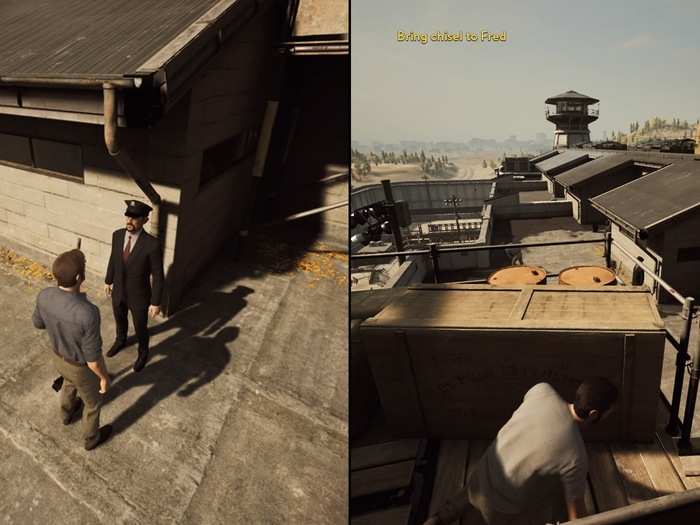
Again, to be all the way clear: You seriously can't play "A Way Out" without two humans controlling each of the two player characters.
The game can be played cooperatively over the internet, or on a single game console/PC. Bonus: You only need one copy to play the game, even over the internet on two separate game consoles!
If you're playing locally, like I did, you'll see a screen divided in two: On the left is Vincent, on the right is Leo. I played as Vincent, my buddy as Leo.
Sometimes they're in the same area, doing different things or working together, and sometimes they're in completely different places — no matter what, each character can directly impact the other. Early on in the game, this plays out in obvious ways: Vincent helps Leo climb up to a ledge, for instance. As the game goes on, though, the concept of two different screens and two different characters becomes something far more interesting.
Notably, the controls are never too complex — most of the game's actions come with on-screen prompts, which should help make it a bit more accessible to sporadic game players.
Yes, this is both characters working together to choke a man.
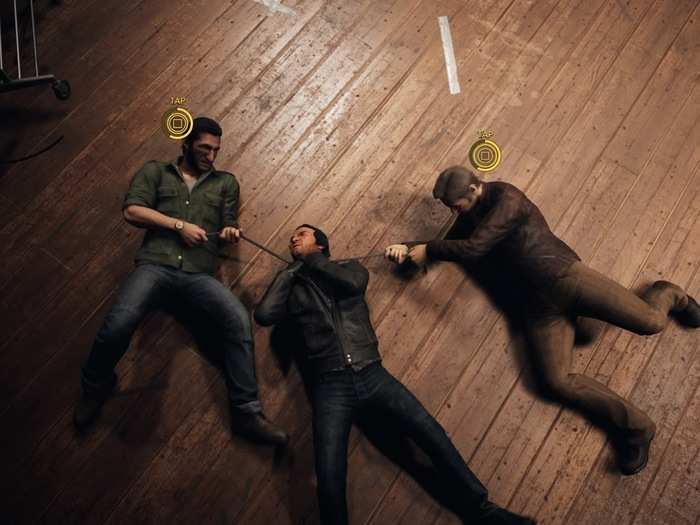
The way that "A Way Out" uses cooperative play is incredibly smart, and it changes a lot as the game goes on.
Take, for instance, the scene above. Here, both Leo and Vincent are furiously scrambling to choke a man. The scenes leading up to this big moment are tense, and break from the game's usual two-screen setup.
Here's what things looked like before the big climax you see above:
You can see the enemy on the left side — he's attempting to break through a barricaded door so that he can shoot Leo and Vincent. On the right side, you can see Leo and Vincent assisting each other in a relatively simple puzzle they needed to solve in order to continue escaping.
The moment was tense, as my buddy and I scrambled to get away from the enemy. I didn't realize how impressive it all was in the moment, but it was a major topic of discussion when we had some downtime soon after. We had both been monitoring the progress of the bad guy on the left, while simultaneously communicating with each other in real life how to help each other in the game.
That the scene culminated in all three screens coming together for the co-op choking was especially impressive (and gruesome, of course).
Every aspect of "A Way Out" is cooperative, which is refreshing and only occasionally gimmicky.
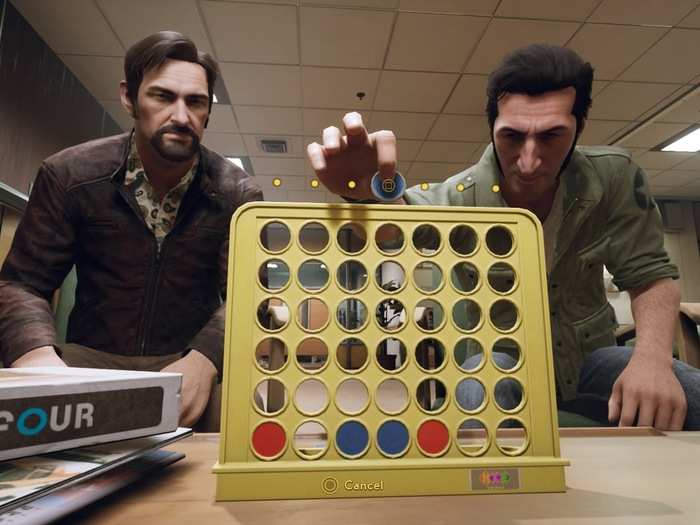
You might expect a game like "A Way Out" to lean too heavily on the co-op concept. Occasionally, it does. For instance, there are a few too many silly asides where Leo and Vincent can play a non-copyright-infringing version of Connect Four, or a silly arcade game, or whatever else.
It's a lighthearted touch that's occasionally welcome, but occasionally out of place.
The good news is that the vast majority of the game's co-op concepts are both reasonable and believable. One character drives while the other shoots, or one character boosts the other to a place they couldn't reach, or one character creates a diversion while the other completes an objective. You know, pretty standard stuff.
The better news is that a hefty chunk of the game's co-op is delightfully smart and innovative. Unfortunately, I can't talk about too much of it without spoiling some of the best parts of "A Way Out. So I won't! Rest assured there is much more to this game's co-op than what you'd expect.
"A Way Out" is playable in one or two sittings — a nice change from the endless upgrades and open-worlds of so many major games.
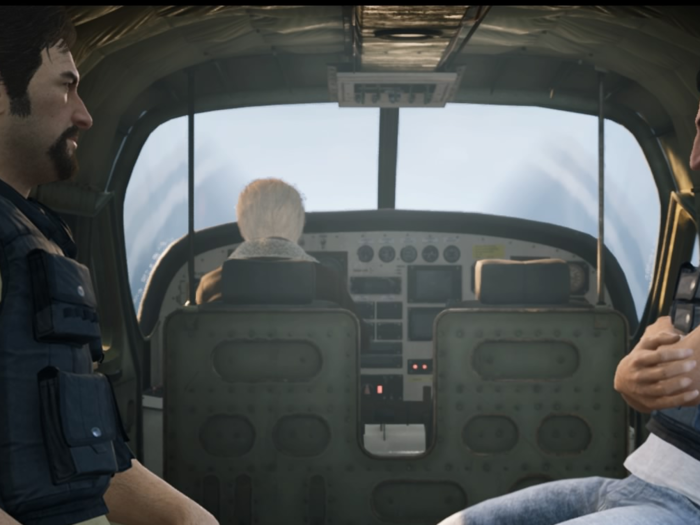
I played through the story of "A Way Out" in one day with a friend on his PlayStation 4. We started at about 10:30AM, and the credits rolled around 7PM, with plenty of breaks. Throughout the course of playing the game, we talked a lot about how to solve puzzles, or which plot thread to follow, or where we thought the story was going.
It felt like marathoning a great TV series at a friend's house, but we got to interact instead of just watching. I can't suggest this enough.
There were amazing scenes where, in the heat of the action, I didn't even realize he was doing something crazy because I was too busy also doing something crazy, but entirely different. Our screens were right next to each other on the same TV, yet I didn't have any idea.
It's this interplay of real-life interaction with your partner, combined with the game's co-op demands, that make "A Way Out" feel special. By the time the credits rolled, I felt like we'd experienced something meaningful together.
"A Way Out" is cinematic in a way that few games are, and it should be applauded for it.
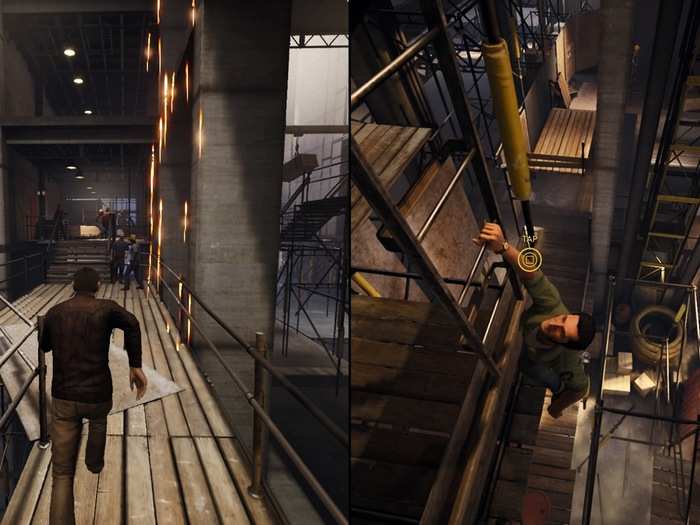
The creative director behind "A Way Out" is a man named Josef Fares — his list of film credits is far longer than his list of video game credits. That pedigree is evident in "A Way Out," which borrows a lot from film.
There are entire sections that are reminiscent of the major works of famous filmmakers, and that's very much intentional: By combining the camera tricks of film with the interactivity of gaming, "A Way Out" creates tremendously charming moments.
So much of "A Way Out" feels handmade as a result — sections that feel like nothing else in the rest of the game. Again, I'm not going into detail intentionally here for fear of ruining some of the game's best moments. But if you're a film geek in the slightest, you'll appreciate the subtle and impactful use of cinematic expertise at work in a game.
At just $30, it's hard not to suggest "A Way Out" — it's a truly unique, daring game that's accessible enough for anyone with an Xbox One, PlayStation 4, or PC to play. Check out the launch trailer right here:

Popular Right Now
Popular Keywords
Advertisement